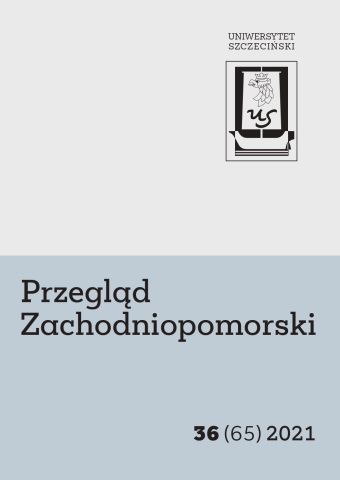Kto spalił Słupsk w marcu 1945 roku? Przypadek pomorskiego miasta zajmowanego przez Armię Czerwoną
Who burnt Słupsk in March 1945? A case of a Pomeranian town captured by Red Army
Author(s): Wojciech SkóraSubject(s): History, Local History / Microhistory, Military history, Recent History (1900 till today), WW II and following years (1940 - 1949)
Published by: Wydawnictwo Naukowe Uniwersytetu Szczecińskiego
Keywords: The Soviets; Red Army; Pomerania; town fires; Słupsk; landsmannschaft
Summary/Abstract: Undefended by the Germans, Słupsk suffered heavy losses during the World War II, which changed forever the town’s buildings. The inhabitants, both the former and the present, the Germans and the Poles, have for decades asked who is to blame as there was no fighting? According to the history of Słupsk edited by Stanisław Gierszewski – until this day the basic synthesis of the town’s history – 25–30 per cent of Słupsk was destroyed in March 1945 as a result of Red Army fights with the Germans. These fights were described. During the Polish People’s Republic period a whispered word of mouth history existed in the background of these false statements. According to this construction, it were the Red Army soldiers who set the undefended Słupsk on fire several hours after capturing the town. Such conclusion was drawn from the memories of the Germans, the Polish pioneer settlers in Słupsk, and from the West German historiography. After the collapse of communism, the word of mouth version, more and more precisely described and justified, was commonly accepted. It was accepted with bitterness, as Słupsk, regarded one of more beautiful Pomeranian towns, “could survive”, because its devastation was not a consequence of military action. It was ascribed to the „barbarism” of the Soviets. This belief can be revised under the influence of the memories of the Germans, published in the 1950s in a journal of the “expellees” from Słupsk, „Stolper Heimatblatt”. Issue 6 contains a letter from Margaret Dähling who eye-witnessed the described events. She was in the city centre when it went up in flames. Her report is surprising, it contradicts the commonly accepted beliefs. The course of events immediately after entrance of the Soviet troops could have been more complex, and the perpetrators could have different motivation than it is assumed. The hypothesis put forward in this article, after taking into account the aforementioned German report, is as follows: Słupsk went up in flames on the night from 7 to 8 March as a result of blowing up the bridges by the German forces, still before the Soviets entered the town. The Germans set a trap for the Red Army soldiers in the Old Market (Markt Platz) houses. On 8 March in the evening, when the Soviet troops had already been there for several hours, the German military materials exploded in the Old Market. The reason is unknown, but the detonation caused by the Germans is likely. As a result of the explosion, further fires ensued. Then the Soviets started systematic fire-raising, for revenge or to blow up further possible traps and to quell possible resistance. The methodicalness of fire-raising and the action of the whole squads point rather to the latter motive. Devastation was completed by the 1st Guards Tank Army of the Red Army marching through the city from Koszalin to Gdańsk. If this hypothesis is true, both the Germans and the Soviets should be responsible for burning the city centre in proportions difficult to estimate. However, the destruction of the town was commenced by the Germans.
Journal: Przegląd Zachodniopomorski
- Issue Year: 36/2021
- Issue No: 01
- Page Range: 151-191
- Page Count: 41
- Language: Polish

